When Roman society was thrown into chaos, atheism, degeneracy, and civil war, it was just at the beginning of its greatest imperial expansion. As America is experiencing all of the same symptoms (except civil war — yet), I expect that America will continue to expand on the world stage for hundreds of years to come. However, to play Devil’s Advocate: imagine that America will descend into civil war in 2025, launch nukes on its own territory, withdraw all its troops from overseas, and effectively cease to exist on the international stage. How would the world develop without America? Would multipolarity usher in a new golden age of Pax Duginia? To answer these questions, we will consider the development of the following regions and countries:
The Americas: Mexico and Brazil
Africa: The four “poles”
The middle east: Turkey and Iran
Greater India
East Asia: China, Japan, and Indonesia
Eurasia: Germany and Russia
Mexican Superpower
There are two countries in the Americans which have the potential to become a superpower: Mexico and Brazil. Mexico only has 130 million people, while Brazil has 213 million people. However, Brazil, since it speaks Portuguese, has a linguistic separation between itself and the rest of the Americas. Mexico, speaking Spanish, will have a cultural advantage over Brazil in conquering Spanish speaking countries.
40 million Mexicans in America will be extremely useful in coordinating economic relations with the much-diminished United States. Mexicans who are deported or leave voluntarily in the event of an American collapse will return to Mexico as conscripts or volunteers, boosting Mexico’s population to a maximum of 169 million.
Mexico’s greatest potential rival in central America is Guatemala, which is roughly the ratio of the Netherlands in comparison with Germany. After conquering Guatemala, Mexico will easily knock out every military between it and the Panama canal. The Panama canal is a central chokepoint for global trade.
At the end of this conquest, Mexico will have a total population of 179 million, and with the assistance of 40 million Mexican Americans, Mexico’s population will total nearly 220 million, making it larger than Brazil. Mexico will have one of the largest continuous coastlines in the world, exposed both to the Atlantic and Pacific, allowing for the construction of a large navy.
Mexico’s first challenge for expanding into South America will be Columbia. Columbia will ally with Brazil over Mexico, checking Mexican expansion and preserving its independence. During this setback, Mexico will first engage in a naval campaign in the Caribbean.
With the conquest of the Caribbean, Mexico will secure additional naval resources for further expansion into South America. Brazil’s neighbors who felt threatened by Brazilian expansion will turn toward Mexico for assistance.
One of the issues with a Brazilian-Columbian alliance is the face that, between Brazil’s coastal centers in the east, and Columbia’s population in the west, there is thick jungle with difficult terrain. This makes it difficult for Brazil to transfer troops across the Amazon in order to reinforce Columbia.
The Pan-American highway is a powerful piece of infrastructure which connects Mexico City to the Panama Canal. No similar infrastructure exists to connect Brazil to Columbia. Mexico can use this logistical advantage to conquer Columbia and break open the floodgates to the oil fields of Venezuela and Ecuador.
The biggest geographical problem for Mexico to cross into South America is the Darién Gap. This area in Panama has resisted any kind of road building until the present day. Still, hundreds of thousands of migrants have traveled on foot through the gap, and infrastructure will be built to resolve this issue.
The biggest obstacle to Mexico’s expansion is the presence of large drug cartels in the country which regularly assassinate government officials. However, these drug cartels are funded almost exclusively by American consumers of drugs. After America loses its first world status, the American drug market will no longer run through south America, but will become home grown or directly imported from Columbia and Asia.
One of the reasons why America’s drugs come from Mexico is because America has stricter controls on cargo coming from overseas than from Mexico. It is easier to smuggle drugs in through Mexico than through America’s other ports of entry. Mexico acts a funnel or chokepoint, so that even drugs produced in China must go through Mexico to arrive in America. As American border security degrades, and drugs are effectively legalized due to weak law enforcement, the Mexican cartels will lose their source of revenue and will be reabsorbed into the Mexican military.
Rather than viewing the cartels as a threat to Mexico’s ability to project power, they are actually evidence of that ability. The Mexican cartels operate thousands of miles outside of Mexico. The cartels will merge with the Mexican state as valuable assets in a continental struggle for power.
The Four African Poles
It is difficult to imagine that Africans can ignore religious and tribal differences to come together as unified blocs. However, there are clearly four “poles” in Africa which are emerging: Egypt, South Africa, Nigeria, and Ethiopia.
Egypt
Egypt is the country best equipped to develop a large centralized state in Africa. It is the largest Muslim country in Africa, has the third largest population, and the second largest economy.
The Egyptian military does receive significant foreign aid from America, and during America’s decline, Egypt will suffer relative to independent states in the region, such as Turkey. Because of this, Egypt will not be able to challenge Turkey for control of the Middle East.
Libya has about half the oil reserves of Russia, with 48 billion barrels in reserve. Other Arab-Muslim African states such as Sudan and Egypt itself increase this total reserve to 58 billion barrels. This is more than Nigeria or the United States, and will make it the biggest energy producer in Africa.
By combining Egypt, Algeria, and Morocco together, the Maghreb Union have a GDP of over $766 billion dollars. The Maghreb will have a larger economy than many first world states, including Israel, but will still be smaller than Poland and Turkey.
Sub-Saharan Africa
After Libya, Nigeria is the biggest producer of oil in Africa. It has the largest population and the fourth largest economy. It is also Christian, which unites it with the rest of sub-Saharan Africa. Unfortunately, this sense of unity is not enough to prevent petty tribal disputes. Africa rulers, so far, have been more interested in sucking their countries dry and letting their people starve than uniting to become larger states.
At the very least, Nigeria has the ability to gobble up its smaller neighbors on the ivory coast.
Nigeria’s Christian rivals include Ethiopia, which has the longest tradition of independent statehood of any African country. However, Ethiopia’s Orthodox Christianity is foreign to most Africans, who are either Catholic or Protestant. Ethiopians are also ethnically distinct in their appearance. In the case of the Tutsi ethnic group, this visual distinction between east Africans and west Africans has resulted in conflict during the Rwandan genocide.
The DR Congo has a large enough population to be considered a power in its own right, but endless civil war has effectively neutralized its ability to defend itself against external incursions.
Finally, South Africa, with the largest economy in Africa, seems on paper that it has the potential to lead the rest of the continent. However, the South African economy has been propped up artificially by western “anti-sanctions” or foreign aid. This was an attempt by western powers to bribe South Africans into giving up apartheid, and acts as an “international” welfare payment. When America declines, South Africa will collapse and descend into civil war.
South Africa’s white population is 6 million strong. After it survives a failed genocide, destroying 50% of its population, the remaining 3 million survivors will rebuild the African continent. Since Nigeria, South Africa, and Kenya all share English as a lingua franca, they will unite to pressure Ethiopia into joining a Sub-Saharan League. Without strong imperial leadership, however, all of these countries — Ethiopia, South Africa, and Nigeria — will fall into a permanent state of civil war and anarchy, instigated by the Maghreb Union to the north.
The Middle East
Turkey, despite being in NATO, is not dependent on America. Turkey has built a modern state with a modern military on its own, and has proven that it is capable of building large empires. Turkey will not, however, overcome the large population and oil reserves of North Africa, and its influence will remain confined to the middle east.
With America gone, it is likely that Saudi Arabia will collapse, and Turkey will fill the power vacuum. The Middle East will be divided between Turkey as the major Sunni power, and Iran as the Shiite power.
The role of Israel will be short lived due to its dependence on American and European foreign aid, especially since it relies upon nuclear weapons to defend itself. Such weapons can only be used once, and when Iran unleashes its retaliatory capacity without the protection of the American Iron Dome, then Israel will be destroyed much more easily than Iran due to its high concentration of population.
China
Contrary to popular belief, China will not benefit from the decline of America. Instead, China will lose its main trading partner, source of food and energy, and will decline as a power. Since China is famous for its bloody civil wars, China will not go peacefully into irrelevance, but will erupt in self-destruction. Whatever side of the civil war gains control of China’s nuclear arsenal will use those weapons on the opposing side. China will effectively neutralize itself.
Japan
Japan is occupied by the American military. As America declines, Japan will be thrown into existential panic and re-militarized. Unlike China, Japan will find many willing allies in the region: Taiwan, Vietnam, and the Philippines all prefer friendship with Japan over domination by China. Culturally, Japan has developed a large degree of goodwill through anime even throughout Asia. Japan remains the most scientifically advanced and ethnically and religiously homogeneous power in Asia. In a future where warfare is more impacted by technology than manpower, Japan will have a decisive advantage over China.
That being said, while Japan will defend itself against external threats and develop a series of alliances in the region, Japan will not have the manpower to occupy China or Indonesia because of its aging population.
Indonesia, as a Muslim country, is culturally isolated in Asia. Its geographical disunity also makes it difficult for it to project power. It is in a similar position to countries like Afghanistan, which are difficult to invade and conquer, but do not have the ability to project power outward.
India
India’s main rival, Pakistan, is funded both by America and China. In the event of a simultaneous American-Chinese collapse, Pakistan will devolve even further into dysfunction. Due to religious extremism, Pakistan’s 170 nuclear weapons will be unleashed on India, with devastating effects, killing 20% of India’s population. Once the dust settles, Pakistan will no longer exist. A united Greater India will expand into Tibet and south east Asia.
Unfortunately, the effects of soil depletion will deprive India of food security, causing mass starvation. At the same time, the melting of the Himalayas will provide India with new rivers (possibly recreating ancient ones too) which will cause a mass migration of India’s population north. These problems of food security and internal migration will preoccupy India and preclude it from expanding further into the Middle East, China, or Indonesia.
Eurasianism
Without America to destroy the Nordstream Pipeline, Germany and Russia will resume economic cooperation. Countries which have significant political ties with Russia will also realign. Some countries with historical animus against Russia will resist integration, such as Poland. Britain will attempt to support anti-Russian forces, but will likely not succeed against a German-Russian alliance.
The German-Russian alliance will eventually come to be 30% Muslim, due to migration from the middle east and central Asia. This internal instability, alongside other demographic issues, will limit the German-Russian alliance from expanding too far into Asia or the middle east. Still, the German-Russian alliance will become the richest and most populous power in the world.
America’s Comeback
Even after America recedes from the world stage, it has too many good things going for it to stay down forever. As an English speaking country, it has cultural ties to Britain, Australia, and New Zealand, as well as South Africa and India.
An anti-Eurasian alliance will appeal to India, since its main geopolitical rival will be Eurasian (as is currently the case against China). Iran and Turkey, which border Eurasia, will naturally oppose its influence, but conflict between Turkey and Iran will force them to take opposite sides.
Europe and Russia will have a large Sunni influence (30% of their population), which will bias them toward Turkey, and against Iran. Additionally, Germany’s large Turkish population will help to cement and alliance between Eurasia and Turkey. Iran will become an American ally once again.
China will be hemmed in on both sides by Eurasia and India, and will attempt to wait the conflict out to rebuild itself. Given the rivalry between Japan and the United States historically, a re-militarized Japan will side with Eurasia. Indonesia will become a contested zone between the Australian and Japanese navy. The Indonesians themselves will tend to side with the Eurasians due to their Sunni affiliation.
The allegiance of Mexico and Brazil will be determined by their attitude toward one another. United, they will oppose America. As separate powers, Brazil will ally with America against Mexico.
This conflict will not devolve into another world war, but will be a rerun of the Cold War — this time with Germany firmly on the side of Russia. Spengler’s predictions will have come true with regard to the central role of Russia. Proxy wars will break out in Iraq, Afghanistan, the Hindu Kush, central Asia, Tibet, between factions in China, south east Asia, and in the Pacific Islands.
Some of these predictions may come true even if America does not enter a period of decline. Remember that Rome’s period of religious chaos and Sulla’s Civil War (83 BC) began 493 years before the Sack of Rome in 410 AD. Even if we claimed that the American Revolution was our first “civil war,” this still means that America has until 2269 before it collapses. If we count Abraham Lincoln as our first Caesar, then the collapse is even farther off. But a more realistic appraisal is that America is only now entering a post-Trump era where we find ourselves decades away from true Caesarism.
Understanding the parallels between Roman and American decline deserves an article of its own. At the very least, these models have been projected in order to illustrate a picture of the world not dominated by China. The idea that “without America, China would control the world” is a scare tactic employed by the American military to promote a war with China. In fact, without America, China will be irrelevant and have little role to play, if any, in a future conflict between Eurasia and the Atlantic powers.





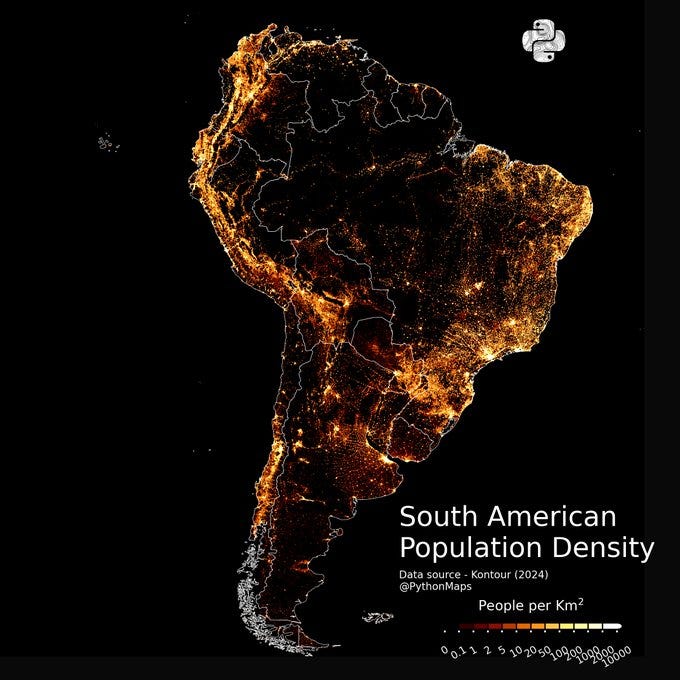




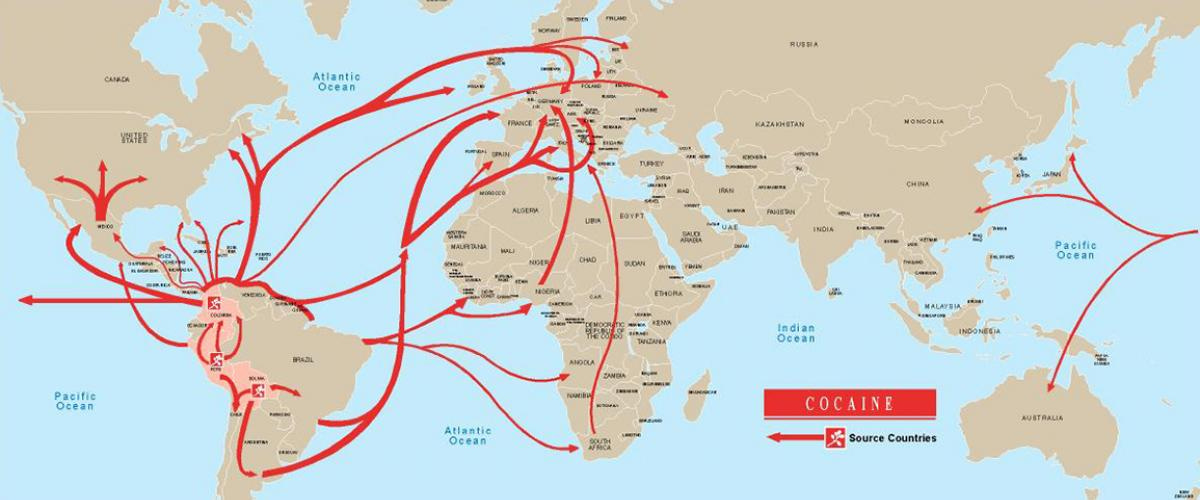
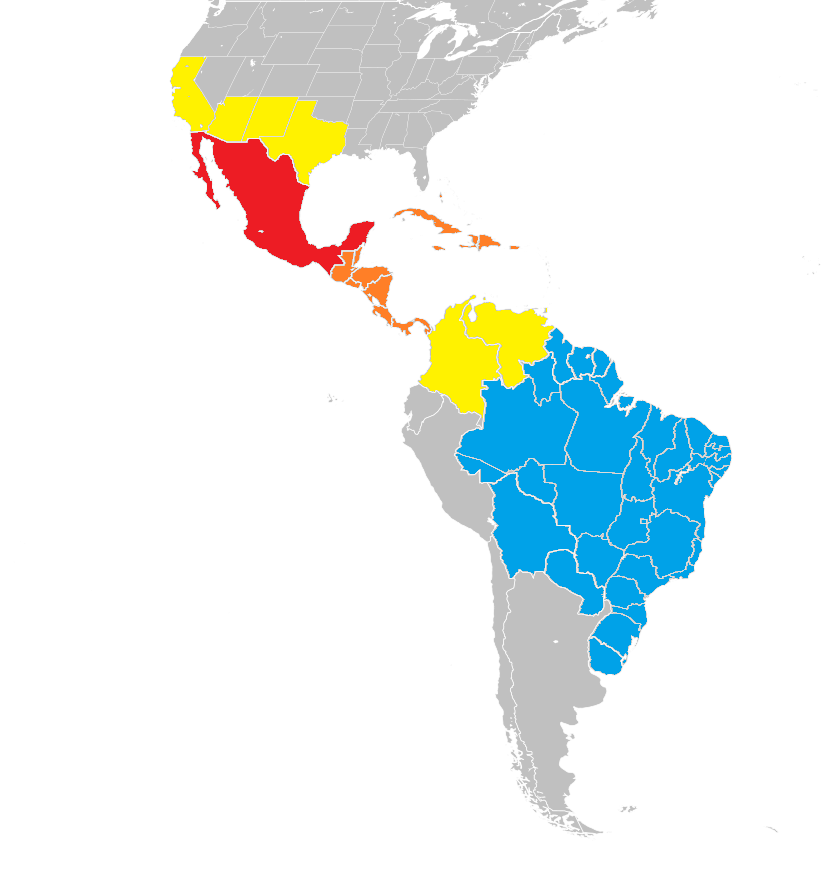
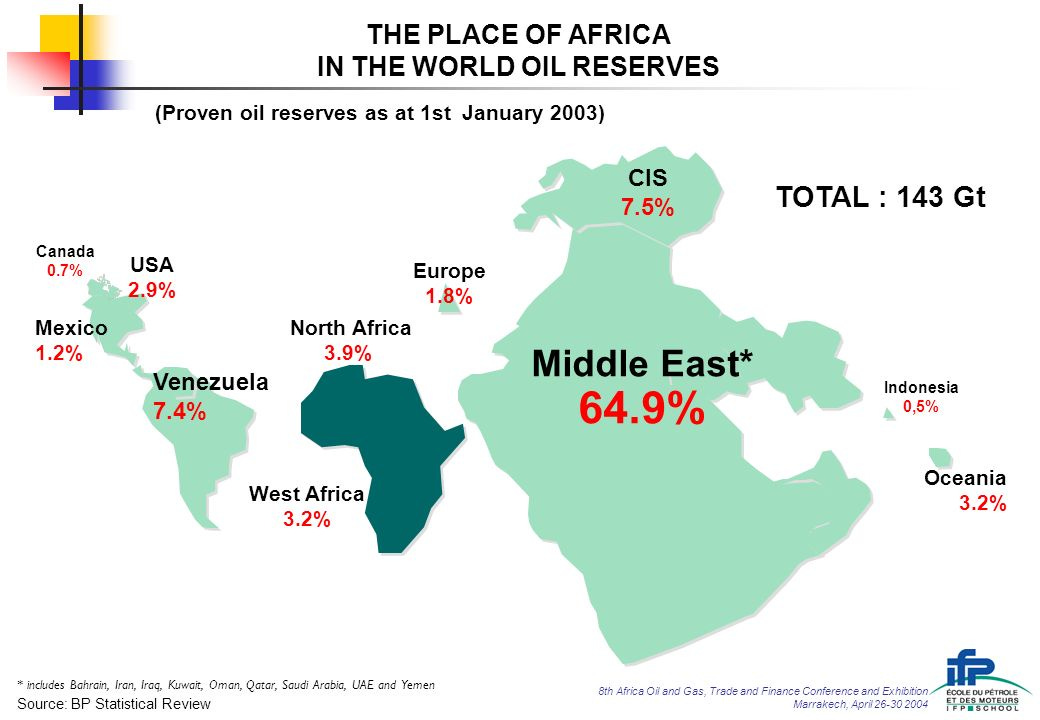

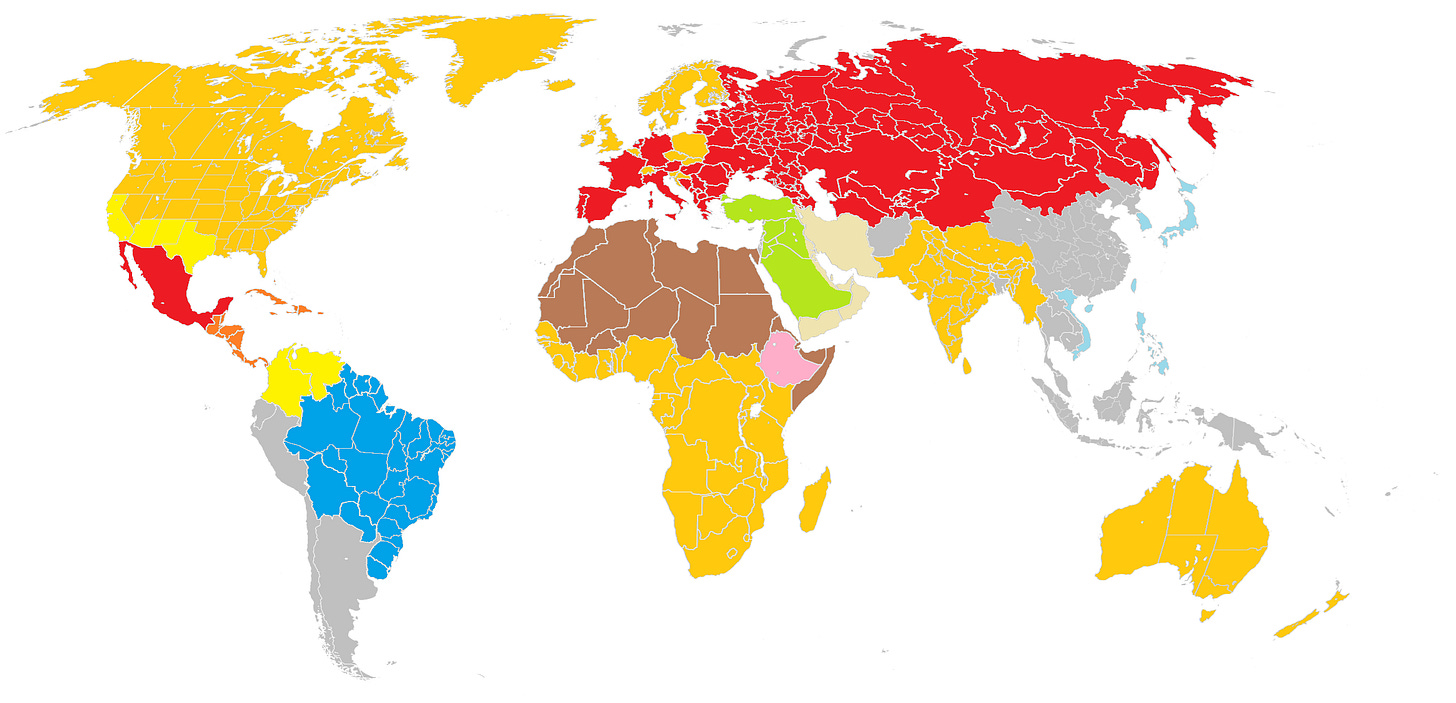



>The Egyptian military does receive significant foreign aid from America, and during America’s decline, Egypt will suffer relative to independent states in the region, such as Turkey. Because of this, Egypt will not be able to challenge Turkey for control of the Middle East.
Turks also have a 10 IQ point advantage over Egyptians.
This is all very well and good. But progressivism has a serious numbers problem. Namely: it doesn't produce any children. As Kaufmann has pointed out in his work on religion and demographics, the world is becoming more religious over time.
Religious conservatives have the most kids and liberals the least, with the mainline religious somewhere in the middle. For the last few decades, irreligiosity has grown due to the children of mainliners giving up the religion of their parents. However, with the mainline now running out of people, society is increasingly divided between the highly religious and the highly irreligious - exacerbating polarisation.
The irreligious are unlikely to make it in the long run. Their birthrates are just too low. So whatever religious ideology is going to unify everyone, it probably won't be any kind of wokeism. That's certainly the current thing, but it's merely a transitional phase to whatever comes next.